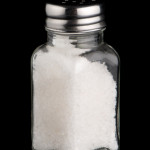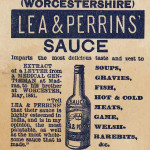If you want to lower your risk of heart disease and lose weight, without feeling deprived, the Mediterranean diet just might be the plan for you. The Mediterranean diet is known for being one of the healthiest eating patterns and one of the easiest plans to follow. In fact, research has shown that it can lower bad cholesterol, lower risk for certain types of cancer, and even improve brain health. The Mediterranean diet doesn’t call for eliminating entire food groups, but encourages smart choices from each.
GRAINS
Many of the grains you will find available in the Mediterranean diet, like barley and buckwheat, are whole grains, which have so many health benefits. Whole grains are not only packed with heart-healthy vitamins and antioxidants, they also contain fiber. Fiber is good for digestive health and heart health, as it can help lower LDL cholesterol (the type of cholesterol that causes heart disease). The Mediterranean diet also encourages enjoying whole-grain breads with olive oil instead of butter because of the heart-health benefits.
FRUITS & VEGETABLES
The diet places an emphasis on consuming plenty of fruits and vegetables. Cucumbers, tomatoes, kale, onions, bell peppers, broccoli, and spinach are all great examples. Combining vegetables with whole grains, in a pasta salad or couscous for example, is a great way to enjoy both. Fruits such as berries, apples, melons, and figs all make great snack or even dessert options. For breakfast you can easily combine fruits with whole grains for a breakfast muesli or try blueberry pancakes made with buckwheat.
PROTEIN
Protein from lean sources such as poultry and seafood are encouraged at least twice a week. However, red meat is supposed to be limited to only a few times per month. Seafood is encouraged because of the heart healthy fats, which are good for brain and heart health. Lean poultry is encouraged because it’s low in saturated fat, but high in protein, which is good for muscle building and satiety. Lemon chicken salad or Tuscan chicken stew would both be great dishes to include on the plan.
DAIRY
Dairy is allowed on the Mediterranean diet, but moderation is key. Instead of fat-free or sugar-free yogurt, switch to plain Greek yogurt, which is lower in sugar, but higher in protein. Low-fat milk and cheeses like feta and brie are also allowed, but moderation is encouraged because of their saturated fat and sodium content. For a simple and healthy weeknight dinner, try combining grilled chicken kabobs with a lemon-dill Greek yogurt dipping sauce.
NUTS & LEGUMES
Nuts, seeds, and legumes are encouraged because they contain heart-healthy fats and fiber. Almonds, walnuts, cashews, peanuts, and sesame seeds can be enjoyed as a snack or sprinkled on vegetables or hot cereals. Legumes, such as split peas and red lentils, are great in soups, stews or on top of salads. Try making hummus at home by using chickpeas, olive oil, and lemon juice, then enjoy it with grilled chicken, sliced bell peppers, and whole-wheat pita bread.
HEART-HEALTHY FATS
Saturated fats like butter are discouraged on the Mediterranean diet, which instead urges heart-healthy fats from olive oil, nuts, seeds, and avocados. Heart-healthy fats can actually help raise HDL cholesterol, which is the good cholesterol that our bodies make in order to fight heart disease. To incorporate them, opt for a baked potato with a drizzle of olive oil, or try adding diced avocado to green salads with grilled chicken. If creamy chicken salad is more your pace, serve it with chopped olives.
SEASONINGS
Instead of using salt to season your dishes, the use of herbs and spices is highly encouraged on the Mediterranean diet. Garlic, rosemary, thyme, sage, mint, and basil are all great flavors to add to simply grilled chicken or green salads. Citrus juice from lemons, limes, and oranges can also add flavor that’s perfect for salads and marinades. Try experimenting at home with different seasonings, and find what works for you.
VARIETY & BALANCE
The Mediterranean diet has a lot to offer in terms of variety and health benefits. In additions to focusing on making smart choices, the plan also encourages family meals and making time for physical activity. Lean protein, whole grains, fruits, vegetables, and low-fat dairy are all smart choices that can help you maintain a Mediterranean-style eating pattern. One you and your family can stick to.
“Work With What You Got!”
©Tiny New York Kitchen © 2019 All Rights Reserved
Fresh herbs have delighted the senses and tantalized the taste buds for centuries. In medieval times great bundles of herbs were strewn on castle floors as a natural air purifier. Brides often chose to wear delicate crowns of flowers interwoven with herbs upon their heads, and both Western and Eastern medical practitioners may employ herbal remedies for their patients.
Many cooks are quite passionate about utilizing herbs in their favorite recipes. Especially bountiful herbs, which perfume our summer and fall gardens with beautiful scents and enhance the plate with their wonderful array of flavors. Using fresh herbs allows cooks to cut back on unnecessary salt, fat, and sugars, while naturally elevating main ingredients.
Brimming with health benefits, each herb plays a special role in beautifying and fortifying the body. Rosemary, for example, may improve memory. Parsley is packed with apigenin, which could potentially reduce the chances of cancerous growths and tumors. Oregano, like all other herbs, has anti-inflammatory properties that may reduce joint inflammation. Oregano is also particularly anti-bacterial and anti-fungal, and can contribute to flawless skin and glossy hair. The calcium content in basil and parsley can help maintain healthy teeth. Mint is calming and soothing and can be a digestive aid. The heady aroma of fresh herbs may help relieve any effects of nausea, as well as soothing and reviving the senses.
Basil’s affinity with tomatoes is a most engaging taste combination. Serve sun warmed tomatoes sprinkled with shards of fresh basil leaves and drizzled with olive oil. The slightly sharp bite of chives enlivens potatoes, eggs and salad dressings. Cilantro is a must for Mexican and Asian dishes. Dill adds a light, lovely layer to fish, while the snappy tang of parsley is delightful in tabouli, potato salad, and pasta. Mint is essential for tall glasses of cold ices tea or lemonade and also for embellishing summer fruit platters. Transport your taste buds by making a salad with a bounty of vegetables and a large handful of freshly minced oregano, basil, parsley, and dill. Or scent your grill with the woody stalks of rosemary. They make great skewers, infusing meat, fish, and vegetables with bright, strong flavors.
Clean herbs by soaking in a bowl of cool water, changing the water several times, or until you no longer see any dirt in the bottom of the bowl. Spin dry in a salad spinner or on layers of paper towels. For hot dishes, add herbs at the end of cooking time to avoid diluting their essence.
“An herb is the friend of physicians and the praise of cooks.” – Charlemagne
www.tinynewyorkkitchen.com
“Work With What You Got!”
©Tiny New York Kitchen © 2018 All Rights Reserved
Let’s face it; most of us eat way too much salt. A high-sodium diet can increase risk of high blood pressure (hypertension), which can lead to cardiovascular and kidney disease. The Dietary Guidelines for Americans recommend limiting sodium intake to less than 2,300 mg per day, which is about 1 teaspoon of salt. The good news is that reducing the amount of salt you use will retrain your taste buds to sense other flavors. You won’t even miss it.
Bland food is such a bore, but how can we keep sodium in check without sacrificing flavor?
Here are some suggestions to reduce salt in your diet:
Remove the salt shaker from the table when you eat.
Limit process foods, including cured, pickled, salted, or brined products.
Focus on fresh or frozen fruits and vegetables without sauces or seasonings.
When choosing canned options, look for “no salt added” or “low sodium.”
Cook at home so you have control over how much salt you add.
Flavored vinegar, onions, garlic, and citrus also add tons of flavor without the sodium.
Herbs and spices are the key to flavor. Add dried varieties during cooking and fresh herbs at the end of cooking or when plating a dish. Thyme, mint, lemongrass, dill, basil, oregano, chives, and parsley are great herbs to use. Spices like pepper, ginger, chili powder, and cinnamon are excellent spices to flavor your food.
“Work With What You Got!”
©Tiny New York Kitchen © 2018 All Rights Reserved
Generally animal products are higher in fat than plant foods, but it’s not necessary to cut out all meat and dairy products to keep your fat intake reasonable. Low-fat dairy foods, lean and well trimmed meat, and skinless poultry provide the same amounts of vitamins and minerals as their fattier counterparts. Skinless poultry, fish, dry beans, and split peas are the “slimmest” foods in this category. By removing the skin from poultry, you reduce the fat by almost one half. Most seafood is low in fat and also contains beneficial omega-3 oils, which have been linked to lowering blood cholesterol. Dry beans also provide the body with fiber, which is necessary for digestion.
You can enjoy red meat if you choose lean cuts and trim away all the visible fat (marbled fat cannot be trimmed away). Here are some good choices:
*Beef eye round, top round, tenderloin, top sirloin, flank steak, top loin, and ground beef. Choose ground sirloin; it’s 90 to 93 percent lean.
*Veal cutlets (from the leg) and loin chops.
*Pork tenderloin, boneless top loin roast, loin chops, and boneless sirloin chops.
*Lamb, boneless leg (shank portions), loin roast, loin chops, and leg cubes for kabobs.
Here are some suggestions to make trimming excess fat from your diet easier:
*Choose lean cuts of meat and trim off all the visible fat before cooking. Remove skin from poultry before or after cooking.
*Broil meat on a rack so the fat can drop away.
*Substitute ground chicken or ground turkey for ground beef. Look for ground turkey breast or chicken breast; otherwise, it may contain skin and therefore have as much fat as ground beef.
*Substitute protein-packed dried legumes, like beans and lentils, for meat in casseroles.
*Chill soups and stews overnight so you can remove all the hardened fat from the surface.
*Be skimpy with fat. Use nonstick pans and nonstick cooking spray, or sauté in a small amount of broth or water. Don’t just pour oil into a skillet; it’s easy to add too much. Measure or use a pastry brush to coat pans with a thin layer of oil. When baking, coat pans with a spritz of nonstick cooking spray instead of oils or fats. Kitchenware shops carry oil sprayers you can fill with your favorite oil.
*Experiment with low fat or skim milk, low fat sour cream and cheese, and nonfat yogurt. They provide the same amounts of calcium and protein as the whole milk varieties, but with less fat or none at all.
*When making dips, substitute nonfat plain yogurt for sour cream.
*Use fresh herbs and zesty seasonings literally.
*Choose angel food cake instead of pound cake, especially when making cake-based desserts like trifle.
*To reduce fat and cholesterol, you can substitute 2 egg whites for 1 whole egg in recipes, but don’t substitute egg whites for all the whole eggs when baking. The dessert will have better texture and flavor if you retain a cold or two.
*Replace sour cream with buttermilk or yogurt in recipes for baked goods.
“Work With What You Got!”
© Victoria Hart Glavin Tiny New York Kitchen © 2017 All Rights Reserved
Season With Worcestershire Sauce
Think of Worcestershire sauce as the “Fish Sauce” of American cooking. Worcestershire sauce is probably one of the most underused condiments. The sauce is a fermented mix of vinegar, molasses, anchovies, and other seasonings that adds great flavor to a dish without adding many calories. I often add a splash to salad dressings, marinades, and sauces, or use it to season ground meat for meatloaf or burgers. Just go easy because it’s high in sodium.
"Work With What You Got!"
© Victoria Hart Glavin Tiny New York Kitchen










